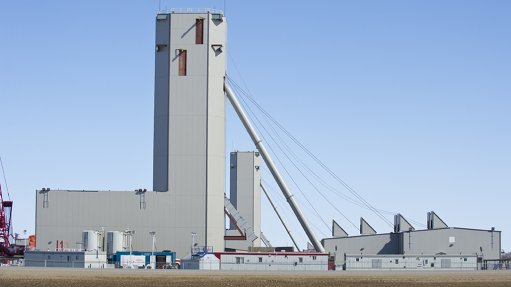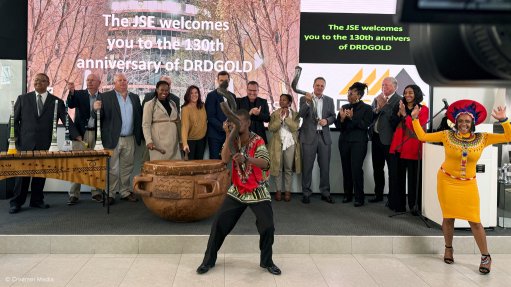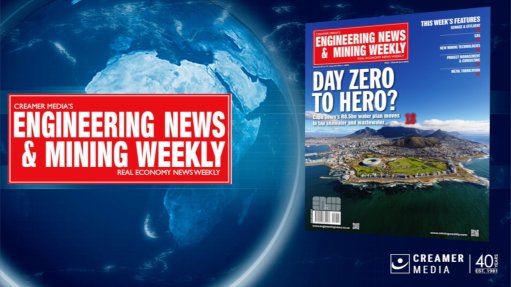Holistic approach to lifting projects saves time, money

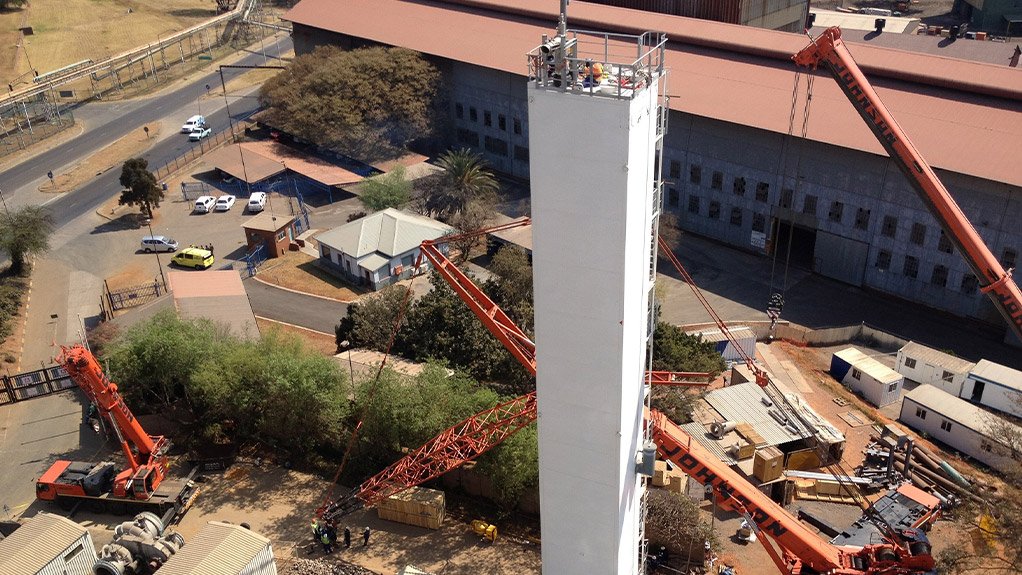
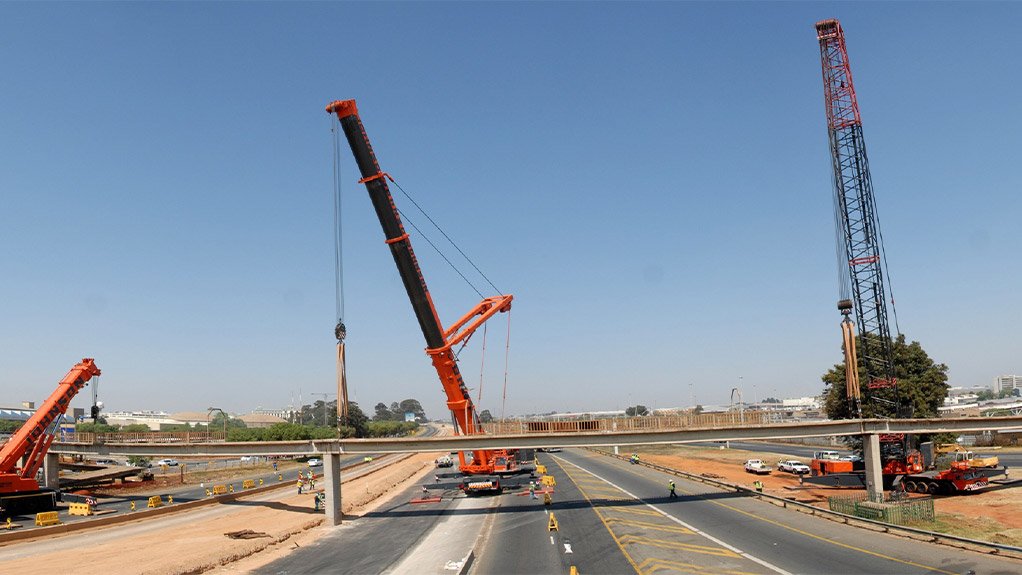
PRECISION PLANNING Johnson Crane Hire heavy lift and support cranes were used for the installation at height of heavy equipment, requiring precision planning and lifting on a confined site
Photo by Johnson Crane Hire
MULTIPLES A multiple crane lift for the removal of heavy existing bridge beams on the R21, in Gauteng, which was performed while the freeway was in operation
Photo by Johnson Crane Hire
Germiston-based mobile crane hire company Johnson Crane Hire tells Engineering News that the heavy lifting capacity of the company’s modern mobile crane is transforming industrial project roll-out.
“Twenty years ago, our heavy-lift fleet consisted of 350 t mobile cranes, which were the biggest capacity cranes on offer at that time. Currently, we offer hydraulic cranes of up to 750 t to clients, and also crawler and lattice boom cranes of up to 750 t capacity, which demonstrates the different types of lifting requirements that the market demands,” explains Johnson Crane Hire sales executive Peter Yaman.
He warns, however, that taking advantage of advanced lifting and moving technology is not as simple as it sounds.
“It is vital that a project manager consider the lift requirement holistically, with a proper lift risk assessment being done as early in the project life cycle as possible,” says Yaman.
Johnson Crane Hire aims to deliver a successful lift by engaging the client at the early stages of the project. “With the ability to lift much heavier components than in the past, we are able to prefabricate more of the components beforehand and deliver these to site at an advanced stage of construction, ultimately decreasing the hours on site, reducing work at height and, thus, improving safety on site.”
He adds that building an engineered structure or component in a factory environment ensures that conditions are more controlled, and better quality and testing procedures can be enforced, but this can increase the weight of the lift at site, requiring a much larger crane capacity.
“As the largest mobile crane hirer in South Africa, Johnson Crane Hire has a wide range of crane sizes and types, which means we are not limited when applying the most suitable technology to the client-specific project demands,” notes Yaman.
Johnson Crane Hire performs thorough assessments of lifting options for clients to optimise the best solution, but a crane solution may not always be the best option for the application or the installation structure.
“If a lift is not conducive to crane lifting, we can offer alternative lifting technologies such as jack-and-slide or gantry lifts. We will look at the project holistically and decide on the best type of equipment to supply.”
It is important to understand what a company’s requirements are and then servicing the plant as a whole. While a bigger crane is more expensive, it can have savings benefits in other ways such as reduced assembly time and decreased time on site.
Some of the alternative technologies that can be considered when project options are examined at an early stage are jacking and sliding techniques. Johnson Crane Hire recommended this to move 3 000 t concrete units during a recent project proposal. The sheer weight and size of the units made normal lifting using large mobile cranes impractical, but using the jack-and-slide method to get the loads from the casting area to the location where they were to be installed, was best suited to the task.
“This was only one element of the solution, however, as gantry systems and strand jacking could then be considered for the lifting requirements of these structures during installation,” he says.
“A key benefit of alternative systems, such as jack-and-slide or strand jacking, is their modularity. This means their capacity can be cumulatively increased to match the demands of the items to be moved or lifted.”
The company also focuses on all associated risks within a lifting project to deliver it safely, quickly and cost effectively.
“We have strengthened our capacity to systematically conduct upfront engineering studies to safely and cost effectively move loads from factory to foundation,” concludes Yaman.
Comments
Press Office
Announcements
What's On
Subscribe to improve your user experience...
Option 1 (equivalent of R125 a month):
Receive a weekly copy of Creamer Media's Engineering News & Mining Weekly magazine
(print copy for those in South Africa and e-magazine for those outside of South Africa)
Receive daily email newsletters
Access to full search results
Access archive of magazine back copies
Access to Projects in Progress
Access to ONE Research Report of your choice in PDF format
Option 2 (equivalent of R375 a month):
All benefits from Option 1
PLUS
Access to Creamer Media's Research Channel Africa for ALL Research Reports, in PDF format, on various industrial and mining sectors
including Electricity; Water; Energy Transition; Hydrogen; Roads, Rail and Ports; Coal; Gold; Platinum; Battery Metals; etc.
Already a subscriber?
Forgotten your password?
Receive weekly copy of Creamer Media's Engineering News & Mining Weekly magazine (print copy for those in South Africa and e-magazine for those outside of South Africa)
➕
Recieve daily email newsletters
➕
Access to full search results
➕
Access archive of magazine back copies
➕
Access to Projects in Progress
➕
Access to ONE Research Report of your choice in PDF format
RESEARCH CHANNEL AFRICA
R4500 (equivalent of R375 a month)
SUBSCRIBEAll benefits from Option 1
➕
Access to Creamer Media's Research Channel Africa for ALL Research Reports on various industrial and mining sectors, in PDF format, including on:
Electricity
➕
Water
➕
Energy Transition
➕
Hydrogen
➕
Roads, Rail and Ports
➕
Coal
➕
Gold
➕
Platinum
➕
Battery Metals
➕
etc.
Receive all benefits from Option 1 or Option 2 delivered to numerous people at your company
➕
Multiple User names and Passwords for simultaneous log-ins
➕
Intranet integration access to all in your organisation







